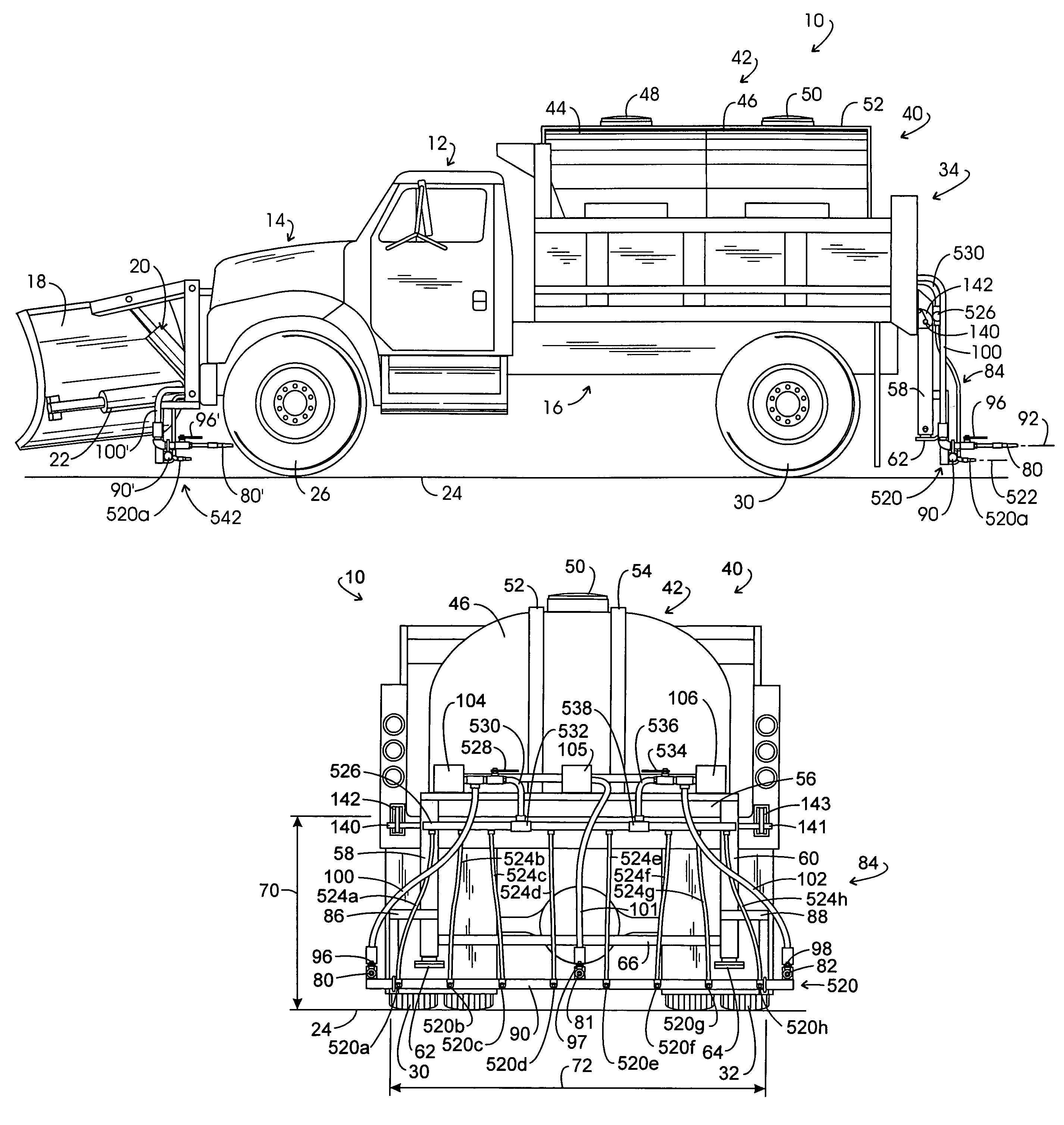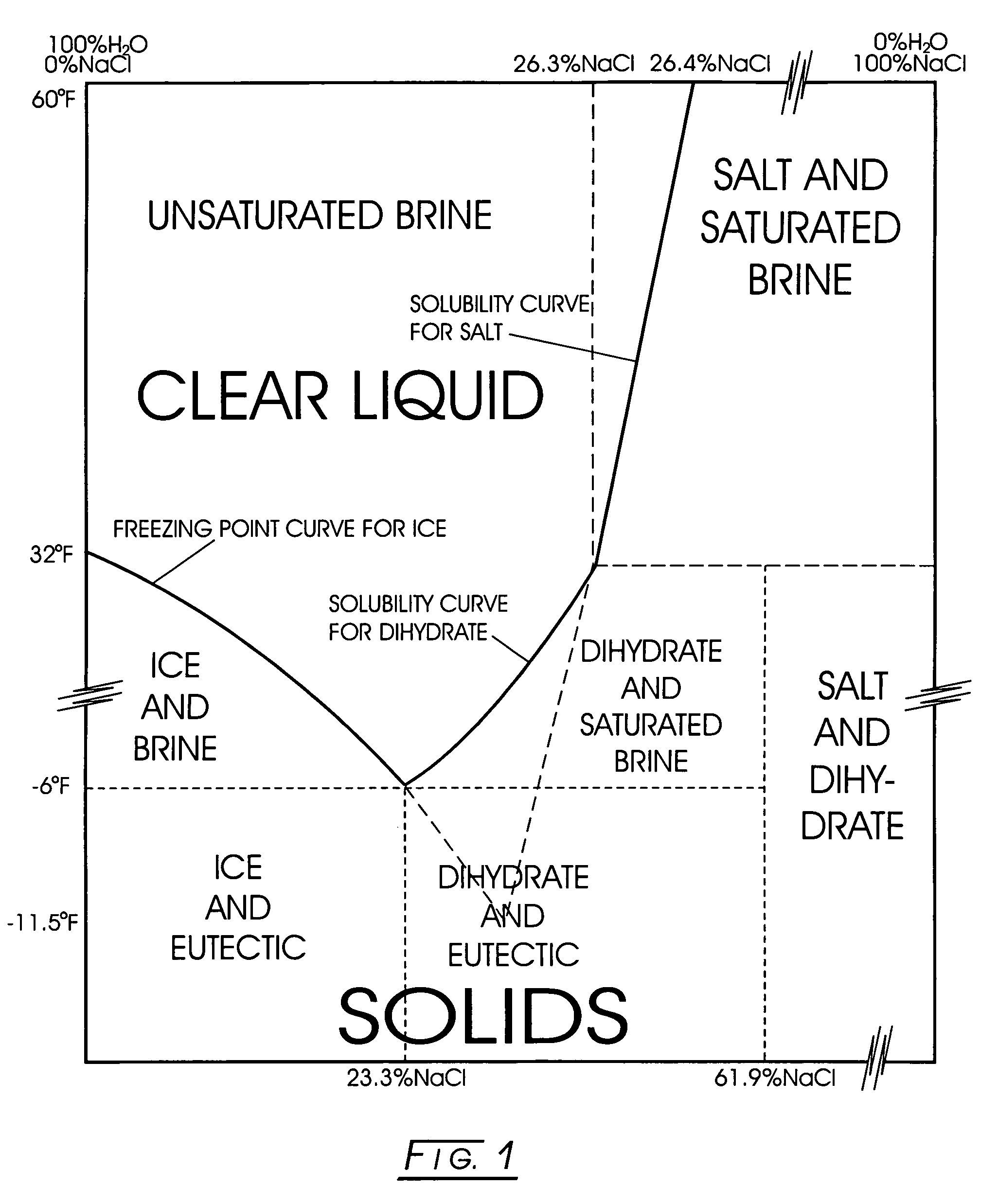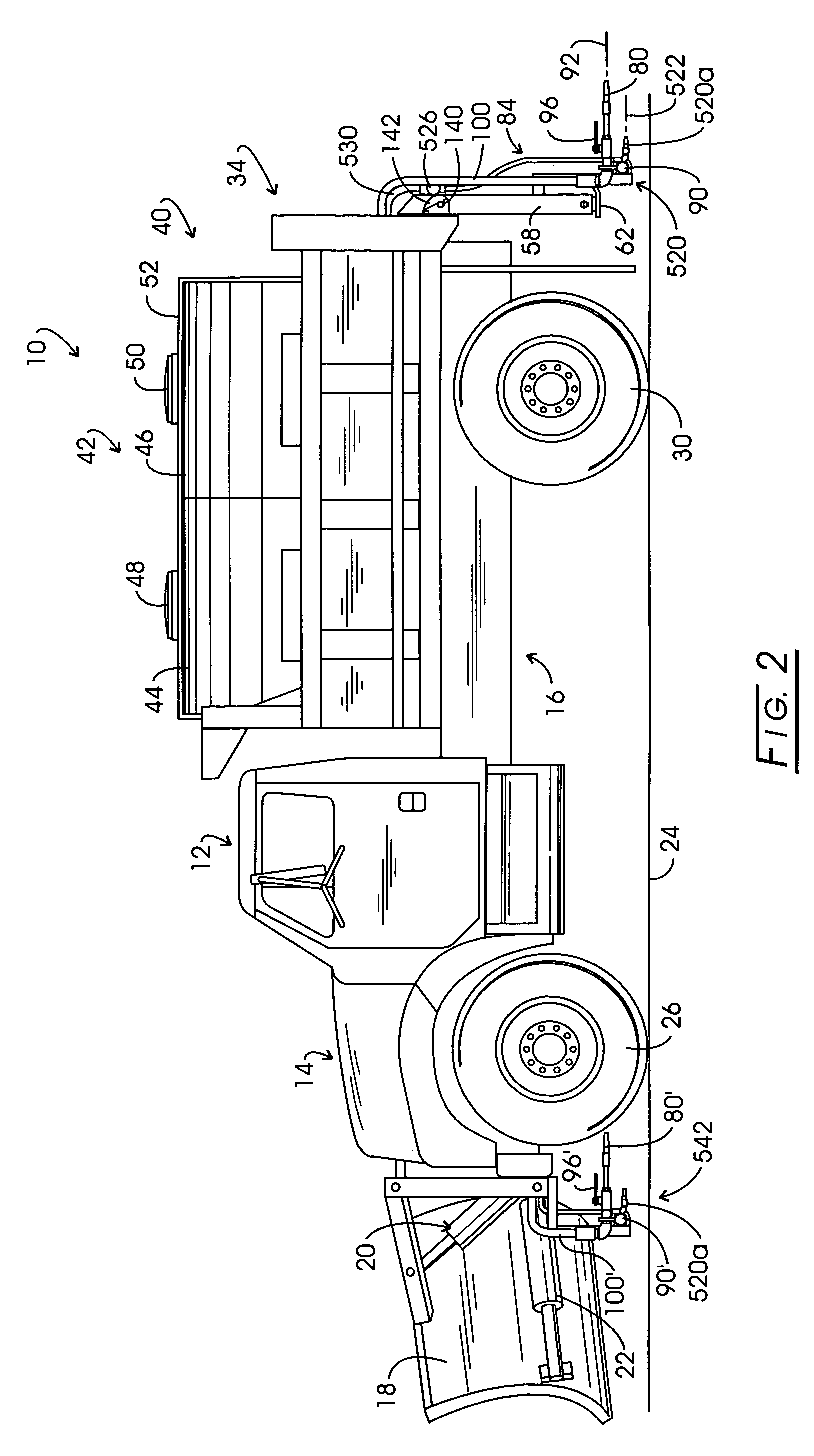Method and apparatus for depositing snow-ice treatment liquid on pavement
a technology of snow-ice treatment liquid and pavement, which is applied in the direction of snow cleaning, roads, roads, etc., can solve the problems of increasing the center of gravity of the truck, affecting the safety of drivers, so as to achieve the effect of minimizing air turbulen
- Summary
- Abstract
- Description
- Claims
- Application Information
AI Technical Summary
Benefits of technology
Problems solved by technology
Method used
Image
Examples
Embodiment Construction
[0036]In the discourse to follow two, alternate approaches for accurately dispensing snow-ice control liquid at high speeds on primary roadway pavement are disclosed. It may be recalled that for pretreatment or anti-icing procedures, this deposition of the snow-ice control liquid is made on dry pavement before precipitation weather occurs. With each approach, the liquid brine is expressed from one or more streamer nozzles, the axes of which are substantially parallel to the roadway surface, at a volumetric flow rate which corresponds with the forward velocity of the dispensing vehicle. Thus, a substantially zero relative velocity is extant between what may be considered a horizontal column of liquid and the roadway surface. These streamer nozzles also are mounted such that they are in a relatively close spaced adjacency with the roadway surface such that the liquid stream being ejected tends to avoid air turbulence caused by the traveling dispensing vehicle and takes advantage of an...
PUM
 Login to View More
Login to View More Abstract
Description
Claims
Application Information
 Login to View More
Login to View More - R&D
- Intellectual Property
- Life Sciences
- Materials
- Tech Scout
- Unparalleled Data Quality
- Higher Quality Content
- 60% Fewer Hallucinations
Browse by: Latest US Patents, China's latest patents, Technical Efficacy Thesaurus, Application Domain, Technology Topic, Popular Technical Reports.
© 2025 PatSnap. All rights reserved.Legal|Privacy policy|Modern Slavery Act Transparency Statement|Sitemap|About US| Contact US: help@patsnap.com



